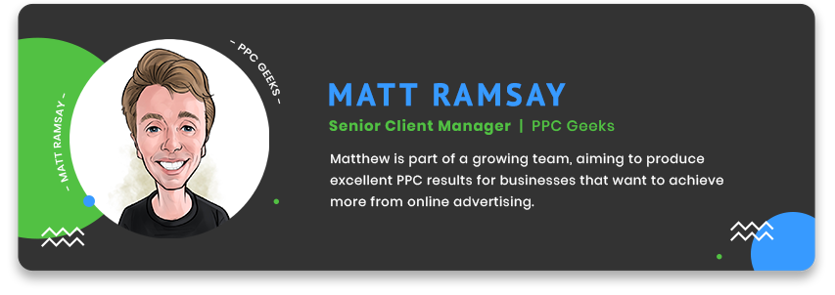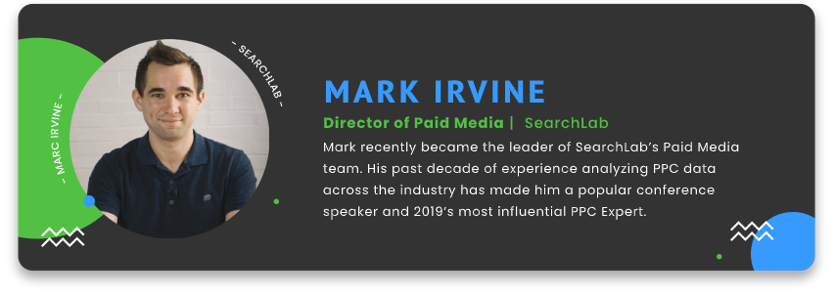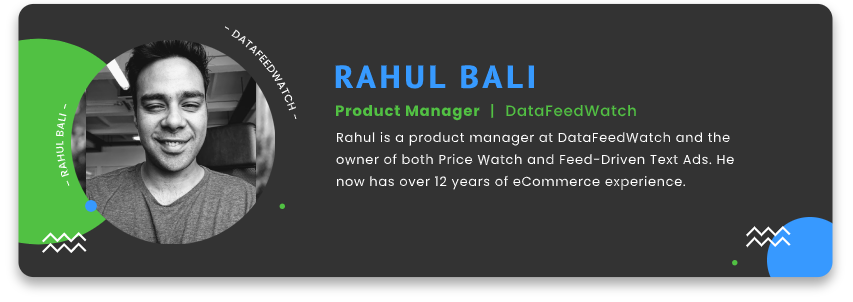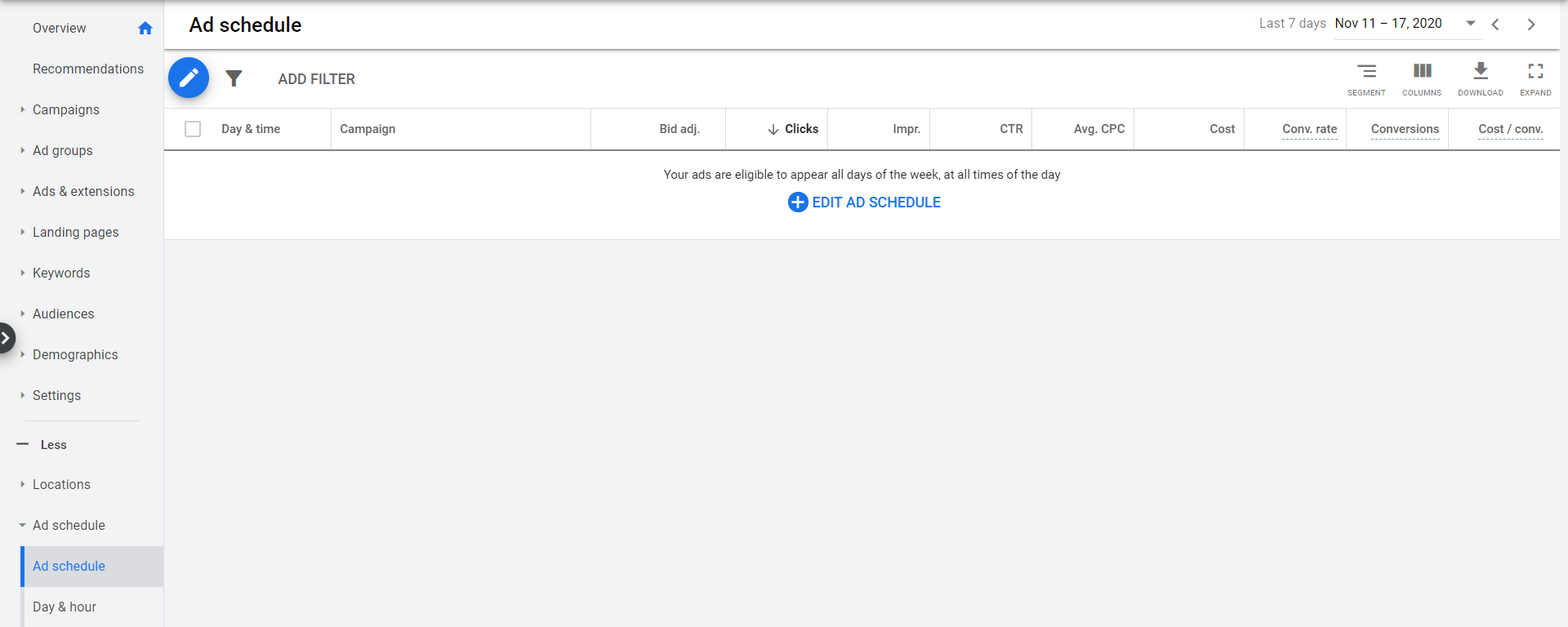We’re in the final stretch of 2020 which means holiday campaigns are coming into full swing. This year has presented its own unique opportunities, but there’s still a lot of practical guidance we can take from our Campaigns of Holidays Past.
That's why we asked 13 PPC experts this question: What Google Ads holiday advice would you give yourself last year if you knew what you know now?

They each had timeless insights to offer that can give your campaigns that extra boost needed to have a merry 4th Quarter ending. And with one eye looking towards the future, we also asked each of our experts to give their prediction for this holiday season.
Wondering how the experts are preparing for their holiday season campaigns? Let’s find out:
Experts do it best: Holiday Season Google Ads advice
Thomas Byskov Madsen || Keep an eye on your competition
Micky Mereu || 4 tips to enjoy the show while being vigilant this holiday season
Matt Ramsay || Prepare early and don't be afraid to adapt
Lawrence Lugtu || Create an audience for people who have made sale related searches
Mark Irvine || Prepare for a longer holiday season
Rahul Bali || Combine Google Shopping and Search Ads
Jimmy Rodriguez || Take advantage of ad scheduling
Charlie Worrall || Plan a themed site takeover
David Green || Get granular with ad copy testing
Mike Rhodes || What's your new vs. returning customer percentage?
Hannah Fahd || Tried and true holiday preparation checklist
Chris Chen || Leverage your remarketing audience list
Giacomo Iotti || Use Google Discovery Ads
eCommerce is 2020: What have we learned?

Keep an eye on your competition
This Holiday season, I am excited to leverage daily updated insights about the competitiveness of my clients’ product prices. Using software, it is possible to identify the lowest available price, among the competitors who are selling the same products as you.
By enriching your product feed with this data, at a product level, you can create Google Shopping custom labels, which compared to the cheapest competitor in the market, segments your products into e.g.: ‘Cheaper’, ‘Same price’, ‘+0.1-5%’, ‘+5.1-10%’ and ‘10%+’.
Dept analysis shows a clear correlation between product price competitiveness and both conversion rate (expected) but also search impression share rank bonus awarded by Google (less known). Furthermore, it shows that there are cut off points where your products are so much more expensive than the rest of the market, that no one wants to buy them.
By splitting up your Google Shopping campaign setup, into segments related to price competitiveness, you can maximize your search impression share (and thus website traffic) across these segments, while adhering to your ROAS (or Profit ROAS/POAS) target on all of them. This means that you can ensure maximum visibility on the products where you are competitive on price, and spend less or no money on the products where your price is simply not competitive. That way, you’ll get more out of your marketing budget.
Holidays 2020, the season where... Covid-19 truly moved shopping online
|| Thomas Byskov Madsen on LinkedIn | Dept
 4 tips to enjoy the show while being vigilant this holiday season
4 tips to enjoy the show while being vigilant this holiday season
During big days such as Black Friday or Boxing Day, there’s nothing more exciting than seeing sales numbers going up. Quickly. Hitting refresh on your performance reports every 5 minutes is a big temptation. But even if you’ve planned your holiday strategy in advance, things can go wrong last minute, especially on the busiest days.
Here the challenges we had to face in the past, and potential solutions we’ll definitely use this year:
1.Promotional ads never went live - sometimes automated rules can go nuts (this is the little notification you receive in your inbox) so definitely spend 5 minutes to ensure everything went as expected, manually, from the editor or Google Ads interface.
2. Broken links - last-minute changes to a landing page or the launch of a new section of the website could break things up. Apart from the Link Checker script setup to run hourly, do manually ensure that landing pages are working, at least for high-traffic areas of the account.
3. Out of stock products - on Google Search ads, you can prevent wasting money on those products by using feed-based search campaigns (do schedule multiple feed fetches per day to align inventory though) and/or with the out of stock checker script.
4. Low bids - for some areas of the account you might just want to push bids more and more due to strong performance or fierce competition. If seasonality adjustments are not reactive enough, don’t just set and forget them. Do manually review your bids multiple times per day (I wish you live in the same time zone as your clients) and make sure you have a strong impression share on top-performing areas for maximum impact.
Holidays 2020, the season of... the highest e-commerce revenue - ever.
 Prepare early and don’t be afraid to adapt
Prepare early and don’t be afraid to adapt
The amount of options available to an advertiser during the holiday season is like being a kid in a toy store at Christmas. It’s exciting to see the potential but also tricky to know exactly what is the best one to pick!
I could write for hours about the best options and steps to take, but for my entry here I will focus on two crucial steps: planning and adaptability.
1. Prepare early (Christmas is worth the effort!)
I would always advise any business to start thinking about Christmas by the start of November at the latest. It might make your insides cringe, but your customers are most likely thinking about Christmas too! Work with your marketing team to understand the wider business priorities and customer demand and then tie that into PPC activity.
Here’s some steps to get you thinking:
- Plan out all the offers you can into a marketing calendar
- Draft up seasonal ad copy
- Review potential changes to bid strategies
2. Monitor closely and don’t be afraid to adapt
You’ll soon see traffic start to build and be drowned by the data (and hopefully sales) But the grind doesn’t stop there! You can’t set and forget your PPC like you would your Christmas Day turkey…
Instead, use the data you gather on a daily basis to make changes based on the results you are seeing.
Getting great results? - See if there is capacity for more spend?
Not seeing the results you need? - Look into the search term report, update your negative and maybe try a new bid strategy.
Sometimes the trends catch you out, so don’t be precious about trying something new, but make sure you have the data to back you up so the changes aren’t made blind.
Above all, keep promoting your USPs and push those products or services that are showing great results, so you can capitalize on the available demand.
Holidays 2020, the season of... record online sales and digital growth.
 Create an audience for people who have made sale related searches
Create an audience for people who have made sale related searches
Consumers research the best holiday deals weeks before an event. In a 2017 Think with Google article, Google said, "In early November, we see generic, non-branded searches for Black Friday outpacing branded searches". For example, "Black Friday furniture sale" searches exceed branded search like “Black Friday Ashley furniture”. Someone who has not only shown such strong commercial intent but has also visited your store is an ideal prospect.
Create an audience for people that will visit your website in the weeks leading up to BF/CM (or other sale event) that have used "Black Friday", "Cyber Monday" or other sale related searches. You can do this in Analytics. Overlay these audiences across your Google Ads campaigns. Before your sale period starts, hike up the bid adjustments to appear more frequently and in more prominent positions the closer these prospects get to purchasing.
Pro tips:
- Set the membership duration to 540 days so you can reuse these lists of "sale hunters" for other future sale events.
- Creating these lists in Google Analytics allows you to create a share link to easily implement these lists for other accounts.
- Some stores may not generate enough "Black Friday" or "sale" related searches for these lists to be eligible, in which case you can determine what other parameters you can use to increase the value of this list. At a minimum, set the "date of visit" values as this still captures recently interested visitors.
Holidays 2020, the season of... new consumer behavior norms.
|| Lawrence Lugtu on LinkedIn | Digital Darts

Prepare for a longer holiday season
The list of things I’d warn 2019 me about is not a short one.
But when it comes to Google Ads, the biggest thing that I’d stress is to plan early for the Holidays. Last year, we saw holiday retail search traffic begin to pick up earlier than ever, starting in early October. This year, a mix of economic and public health anxiety has many planning even earlier and it already appears that holiday search traffic began picking up in July. Google reports that as many as a quarter of Americans have already begun Holiday shopping before this post is even published.
This longer holiday season means that your campaigns may need even more budget this year to capture a growing online demand. Cyber Monday isn’t expected to be a single day or long weekend like it has in the past, but to be a month-long experience while customers search for the best prices and deals.
With that much time to search around, your audience strategy is more important than ever. 1 in 3 Americans have purchased from a brand that was new to them in the past 6 months, so don’t neglect your current loyal customer or past year holiday shoppers, as it’s not a guarantee that they’ll stay loyal. Target these audiences within your own Google campaigns and consider expanding to similar audiences to help grow that base.
Holidays 2020, the season of... digital showrooms – even if customers continue to prefer to pick up in store, their browsing experience will much more likely start online.

Combine Shopping and Search Ads for maximum results
If you want to double your visibility this holiday season, launch your campaigns on both Shopping and Search ads. That way you have the chance of showing up multiple times on the same results page, which a Google study says can make shoppers 90% more likely to click and visit your shop. And if you’re on a tight budget, you can try your hand at Google’s recently launched free product listings.
Couple that with your killer shipping deals and other holiday discounts, and you've got yourself some big sale opportunities.
There are more benefits to this tactic like:
- Giving your competitors less space to advertise their deals when you're both vying for the same customer's attention
- Puts more power behind your promotional message since it's possible to show additional photos and text than you would with just one ad
So if you're only using one or the other, consider this as a way to round out your holiday strategy and end this year on a high note.
Holidays 2020, the season of... merchants expanding online and going down new avenues.
 Take advantage of ad scheduling
Take advantage of ad scheduling
Without any doubt, to use ad scheduling. We have always started and stopped ads manually, but last year we ran different promotions from Thanksgiving, Black Friday, Cyber Monday and Cyber Week; where the small overlap into promotions caused frustration for visitors who just saw the ad but ran into a promotion that was no longer available as they reached the website.
Most paid ads platforms, including Google, Bing, and Facebook; offer ad scheduling. Plan ahead and leverage this great marketing automation tool to manage your promotional ads. Most holiday shopping this season will happen online, and businesses should be prepared for spikes in traffic, having a proper marketing strategy will increase sales.

Holidays 2020, the season of... online growth for small businesses.
|| Jimmy Rodriguez on LinkedIn | 3dCart

Plan a themed site takeover
I would have told myself to make sure that I plan for a themed site takeover, especially for the landing pages for the ads. These themed site takeovers might only have a slight change in the design, whether it’s just the colors or an added animation, but having a small change that still keeps your brand’s iconography can help to promote holiday sales. More importantly, it offers a warmth that you wouldn’t get without this kind of action.
By implementing a themed takeover, you’re able to not only have a holiday sale but you’re also increasing the relevance and offering a slightly whimsical design that could excite your users and make them more likely to purchase products. Having this seasonal/topical relevance helps to align your brand and it’s products with the mindset of the user. It offers a sense of trust and can accentuate the fact that you’re running a holiday sale.
After taking the holiday sale into account, I would suggest that you tailor your ads to the holiday too. For example, if it’s Christmas, mention that in your ad copy. Whether it’s in one of your headings, the description, or even the name of your products, just including the words ‘Christmas sale’ or the like could have a huge effect on your performance.
Holidays 2020, the season of... smart consumers.

Get granular with ad copy testing
The one major thing I learned from the 2019 holiday season that I’ll apply this year again was how much holiday themed ad copy really can move the needle in a campaign.
I’ve always tested and customized ad copy based on holidays/seasonality, but we got really granular in our ad copy testing in 2019 for the holiday season and saw huge increases in click-through-rates (CTRs) and ROAS (return on ad spend) compared to more generic ad copy that was still seasonally-themed.
Online sellers should put in the extra time and effort and write exceptional ad copy targeted around the holiday season. Many of your competitors won’t do it and this is an opportunity to increase your CTR during a time of the year that’s extremely competitive. Be thoughtful and put yourself in your target audience’s position, especially factoring in the affects of COVID-19.
Holidays 2020, the season of... COVID-19 creating unprecedented e-commerce demand.
|| David Green on LinkedIn | Devslove Digital Growth Agency

What's your new vs. returning customer percentage?
A sale is a sale right?
Except your goals and Google's goals aren't always aligned (under-statement of 2020!) You want new customers, and ideally ones with a low return rate, that will continue to purchase high-margin products.
Google wants to show you ROAS, which it can increase by buying cheap revenue. In other words show more ads to existing customers - which you already do a great job of servicing (via EDM, txt, etc.).
What you really want to know is what's the percentage of new vs returning customers. Just how valuable is that revenue? To do this you'll need a bit of extra code (to ask your store if the sale is to a new customer or not) and create a new conversion in Google Ads to hold the data.
Once you have the data you can make more informed decisions, such as sending an increased value for new customers back into Google Ads. Or, sending a value based on your prediction of total profit, rather than just revenue (like everyone else). Have a merry & profitable silly season!
Holidays 2020, the season of... smart data beating the odds!
|| Mike Rhodes on LinkedIn | WebSavvy

Tried and true holiday preparation checklist
My number one advice is to plan in advance. Here is my checklist to provide useful insights for my team and also as subjects of discussion with the clients I work with:
- Start by looking at last year’s performance and search trends. Which were our top selling products last year? Identify key product groups that drove transaction revenue during the holiday season.
- The expected top sellers should be assigned to their own high priority shopping campaign to ensure visibility and maximize sales. This is done by applying a custom label to the list of prioritized products via DataFeedWatch.
- Before the holiday season, do a scan of the feed and apply quick fixes that create a lot of value in the feed. For example - does the title include size, color and/or brand? If not, this can easily be done in DataFeedWatch within minutes. Always think relevance! By adding more relevant information to right parameters in the feed we will be able to drive higher quality traffic. Genius!
- Lastly, you should create an automated dashboard to track search volume and product sales in real time. In an environment where decisions need to be made fast, readily available insights are key.
Holidays 2020, the season of... a crowded digital ad space due to limited accessibility to physical stores
|| Hannah Fahd on LinkedIn | Keybroker

Leverage your remarketing list
Early engagement with your prospects is crucial. There are many benefits when it comes to that. It’s much less competitive on Google for you to get click/traffic for “gift shoppers” before the actual holiday begins, meaning a much lower CPC for you to acquire potential customers to the site. Additionally, by starting out early it’s easier for your new campaign to gain a dominant position on SERP and keep your momentum steady.
When you reach the holiday, re-engage those shoppers looking for gift ideas with an appealing offer. By the time when other merchants start interacting with the same group of audience as yours, you are already ahead of the race. Familiarity in 90% of the cases leads to comfort and credibility. A strong sale offer during holiday will help you close the deal!
Launch a traffic focused search campaign two to three weeks before the actual sale period, targeting users who are looking for gift ideas on Google. Leverage your remarketing audience list to make sure you re-engage and bring those users down to the bottom funnel when holiday starts.
Holidays 2020, the season of... heavy digital ad clutter due to pandemic.
|| Chris Chen on LinkedIn | Ana Luisa

Use Google Discovery Ads
Something I regret not trying last holiday season, although widely available only from this year, is Google Discovery Ads. I am definitely excited to try them out in the next few weeks.
Discovery Ads are like Display Ads on steroids. In fact, the campaign structure is quite similar to Smart Display Campaigns, where you basically only need to provide the building blocks of your ads and then the system does everything else automatically for you, including targeting and placements.
The difference is that with Discovery Ads you are sure your ads are only placed on Google properties, like the Google mobile app and YouTube, which by definition are generally more brand-safe than regular website placements.
There is also a new feature for attaching a lead form to your ads, similar to lead generation ads in Facebook. This is definitely something I am keen to know more about as it seems to bridge the gap between B2B and B2C tactics. In fact, even in B2C and eCommerce there are several instances where you might want to collect leads first. For example when you sell expensive products that require some kind of "test-drive" first.
When creating a new campaign simply select "Create a campaign without a goal's guidance" and then click on Discovery Ads. Have fun from then on!
Holidays 2020, the season of... eCommerce!
|| Giacomo Iotti on LinkedIn| Giacomoiotti.me
eCommerce is 2020: What have we learned?
Our best insights often come from past experiences. We're grateful to our experts who took a look back at their previous holiday season campaigns and shared what they learned with us.
It's clear from our experts' predictions that COVID-19 has significantly shaped the landscape of how eCommerce holidays will look like from here on out. There are a lot of solid, educated guesses out there about what the holiday revenue numbers will be once 2020 is wrapped up.
We're looking forward to seeing the full picture come next year along with all of the advancements made to online shopping as a result.